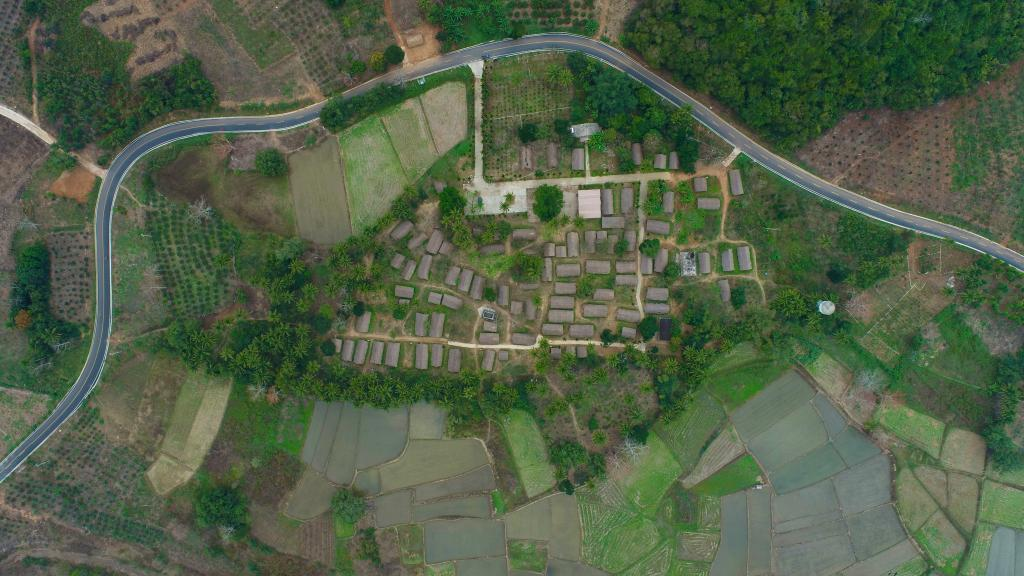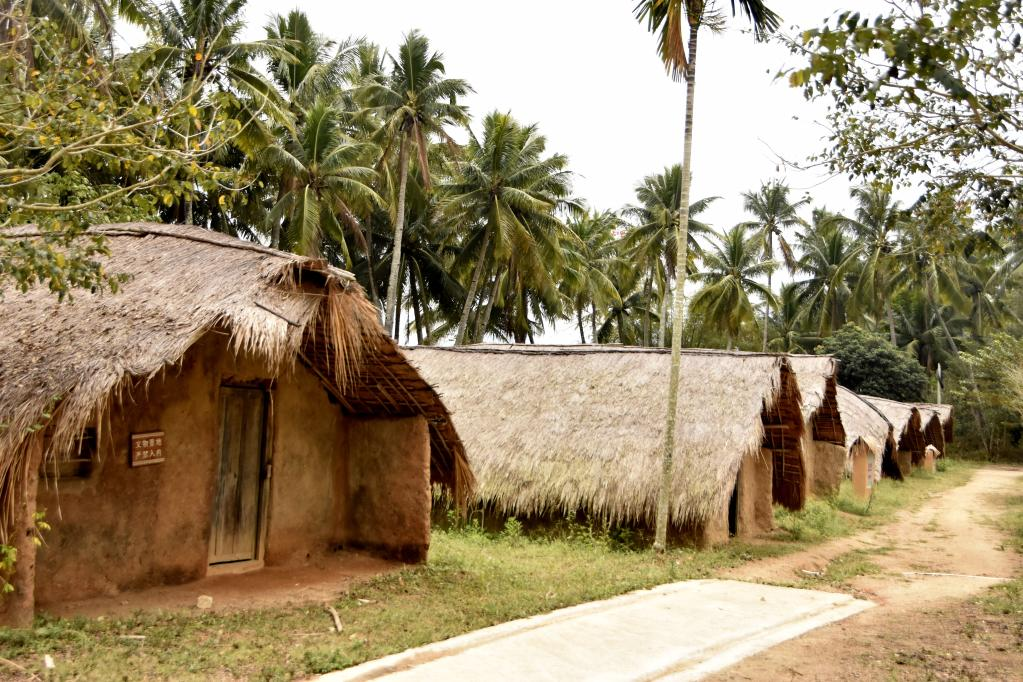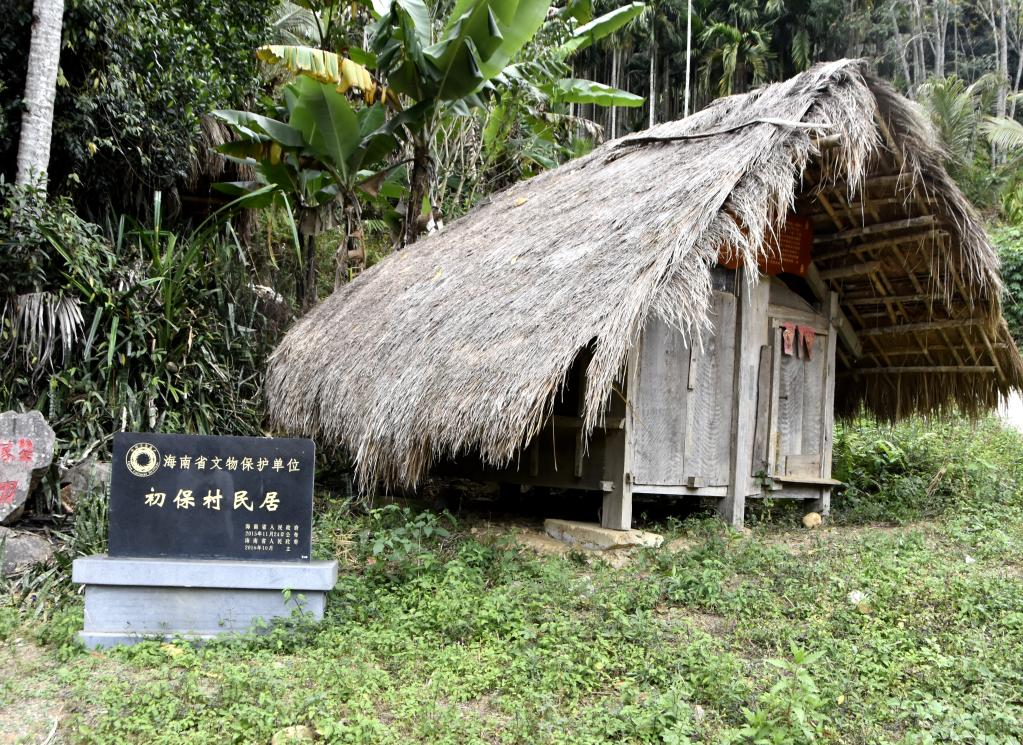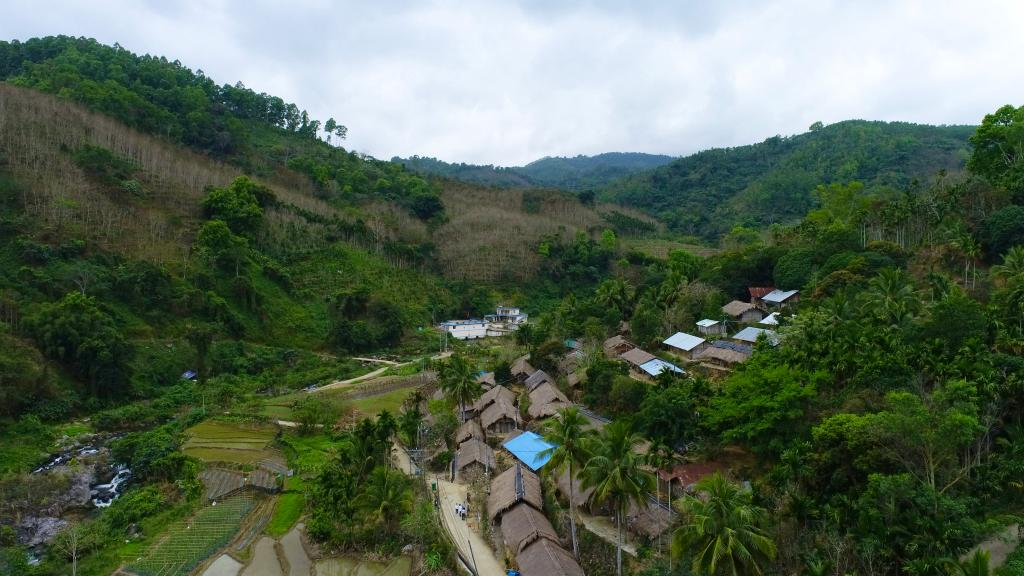
Aerial photo taken on Feb. 23, 2022 shows the view of Baicha Village in Dongfang City, south China's Hainan Province. (Xinhua/Li Duojiang)
HAIKOU, April 28 (Xinhua) -- In the island province of Hainan, the village of Chubao boasts something unique: dozens of boat-shaped thatch cottages lined up surrounded by coconut trees.
Tucked away in the boundless lush mountains in south China, the cottages feature walls made of wood or mud, and triangular thatch roofs, giving them the appearance of an overturned boat.
The boat-shaped houses were built by the local ethnic Li people in Chubao Village. For thousands of years, the local Li people have lived in these houses in the rainforest.
"We lived here for generations," said local villager Wang Shiqi.
In recent years, locals have gradually moved into modern new houses. But as the traditional dwellings bear testimony to the Li culture, they are now well preserved.
Authorities are applying for the houses to be included in the World Heritage List, hoping to draw more attention to the distinctive values of the Li culture.
Recently, the Hainan tropical rainforest and the traditional settlement of Li ethnic group have become part of the tentative list to qualify for inclusion in the World Heritage List.
The Li people have developed a distinctive culture over many years of development. Their colorful culture includes Li brocade, bamboo dancing, face tattoos, and boat-shaped houses, among others.
Legend has it that the ancestors of the Li people arrived in Hainan by boats. When they arrived, they turned the boats upside down as houses for shelter. Their descendants built the boat-shaped houses in memory of their ancestors.
In the late 1980s, about 800,000 Li people were still living in boat-shaped dwellings in Hainan.
But the houses were not that easy to live in, as they were made of thatch or mud, making them susceptible to the damage from wind and rain.
"In the summertime, it was cool in the houses, but in winter, the biting wind sneaked in through the cracks," recalled Wang Shiqi.
As people's living conditions improved, they began to move out of the houses.
Though villagers no longer live in the houses, they have unique feelings attached to them.
"After all, we have lived here for a long time," Wang said.
Authorities have made efforts to preserve the traditional houses by putting them on the provincial-level list of cultural heritage under protection.
"The thatched houses reflected the Li people's wisdom for house location and layout and their architecture skills," said Li Jilong, with the provincial department of tourism, culture, radio, television and sports.
The houses should be preserved as cultural relics so that the younger generation will know the stories of their ancestors, said Chen Rongchuan, curator of the cultural museum in the city of Dongfang, which administers Baicha Village, home to more than 80 such houses.
"The traditional houses are of great value, and they should be well preserved," said Liu Baodang, with the National Forestry and Grassland Administration. ■

Photo taken on Feb. 23, 2022 shows boat-shaped thatch houses in Baicha Village of Dongfang City, south China's Hainan Province. (Xinhua/Liu Deng)

Photo taken on Feb. 16, 2022 shows a boat-shaped thatch house in Chubao Village of Wuzhishan City, south China's Hainan Province. (Xinhua/Liu Deng)

Aerial photo taken on Feb. 16, 2022 shows the view of Chubao Village in Wuzhishan City, south China's Hainan Province. (Xinhua/Li Duojiang)



